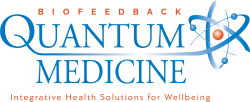How Quantum Biofeedback can help with ADHD
from Dr. Violetta Anninou, Ph.D.
Molecular Biologist with HONORS, University of Delaware, U.S.A.
ADHD (Attention Deficit Hyper reactivity Disorder) symptoms include inattention, inappropriate hyperactivity and impulsivity. (1) ADHD is one of the most common neurodevelopmental, neurobehavioral and chronic debilitating mental disorders of childhood which may often last into adulthood. ADHD is not considered a disease but rather a group of symptoms consisting of emotional, psychological, and/or learning problems. (2) About 6.1 million children in the United States (9.4 percent) between ages 2 to 17 are estimated to have ever been diagnosed with attention deficit hyperactivity disorder (3). According to a research study from JAMA (Journal of the American Medical Association), ADHD, has become more common in children over the past twenty years (4).
many factors such as genetics, anatomical differences in the brains of children with ADHD in comparison to other children without the condition. reduced grey and white brain matter volume (Pliszka, 2007), low birth weight, premature birth, exposure to toxins (alcohol, smoking, lead, etc.) during pregnancy, and extreme stress during pregnancy (5). In children and adults with ADHD, the frontal and parietal lobes – the parts of the brain that enable us to organize, to concentrate and to process sensory information work differently. More specifically, the brainwaves do not vibrate at the frequency nature intended (6).
If you are concerned about whether a child or adult may have ADHD the first step is to get a diagnosis by a mental health professional such as a psychologist, psychiatrist, pediatrician or physician (7). It is essential that ADHD should be properly treated to improve self esteem, reduce anxiety, improve concentration and reduce suffering because it affects many aspects in one’s life at home, school, work and interpersonal relationships including academic and professional achievements, and daily functioning.
According to research studies biofeedback can help address ADHD. (8, 9, 10) Quantum Biofeedback using the QUEX ED is the most advanced method of biofeedback and the ideal solution to detect, reduce and manage stressors addressing the unconscious mind. It is the most effective tool in digital transformation in healthcare operating at biological speeds 1/1000 per second analyzing over 65 million bits of data, broadcasting over 12,000 frequencies to the body and identifying both acute and chronic potential imbalances.
Clients then can then be provided information about the results in a report concerning the ADHD and frequency training signals can be activated to attempt balancing or harmonizing for items of concern according to their individual needs
To help reset the brainwaves that are out of balance quantum biofeedback devices QUEX ED applies the principles of electric engineering. They send soft electric pulses through the body, which are specially designed to target the unbalanced waves. without side effects since it is noninvasive. To help children (or adults) with ADHD the quantum biofeedback device analyzes the brainwaves of the frontal lobe parietal lobe, the limbic system, the EEG (brain rate variability),Neuro-EEG programs, neurotransmitters and neuroemotional chart. The EEG (brain rate variability) programs are done in the beginning and at the end of therapy to measure percent improvement. Specific quantum biofeedback protocols for ADHD are created according to individual needs such as enhanced learning and superlearning.
Quantum Biofeedback therapy sets out to re-educate the body electric, helping the brain regain its balance. Even long after the training is over, the brain remembers the new, more efficient paths that have been created. Through repeated practice, the brain is trained to concentrate for longer periods of time.
References
- Attention-deficit / hyperactivity disorder (adhd) in children. (n.d.). John Hopkins Medicine. https://www.hopkinsmedicine.org/health/conditions-and-diseases/adhdadd
- Furman, L. (2005). What is attention-deficit hyperactivity disorder (ADHD)? PubMed, 994–1002. https://pubmed.ncbi.nlm.nih.gov/16417850/
- Adhd statistics: New add facts and research. (2006, October 5). ADHD Statistics: New ADD Facts and Research. Retrieved February 23, 2023, from https://www.additudemag.com/statistics-of-adhd/
- Xu, MD, G., Strathurn, Ph.D., L., & Liu, MD, B. (2018). Twenty-Year Trends in Diagnosed Attention-Deficit/Hyperactivity Disorder Among US Children and Adolescents, 1997-2016. JAMA. Retrieved February 27, 2023, from https://doi.org/https://jamanetwork.com/journals/jamanetworkopen/fullarticle/2698633
- R. (2022, June). What is ADHD? American Psychiatric Association. Retrieved February 27, 2023, from https://www.psychiatry.org/patients-families/adhd/what-is-adhd
- HOW CAN BIOFEEDBACK HELP CHILDREN WITH ADHD?. (2021, July 4). HOW CAN BIOFEEDBACK HELP CHILDREN WITH ADHD? Retrieved February 27, 2023, from https://qxworld.eu/how-can-biofeedback-help-children-with-adhd/
- Centers for Disease Control and Prevention. (2022, August 9). Symptoms and diagnosis of adhd. CDC Centers for Disease Control and Prevention. Retrieved February 27, 2023, from https://www.cdc.gov/ncbddd/adhd/diagnosis.html
- Watson, S. (2022). Biofeedback therapy: Uses and benefits. WebMD. Retrieved February 27, 2023, from https://www.webmd.com/pain-management/biofeedback-therapy-uses-benefits
- Biofeedback – harvard health. (2018, December 4). Harvard Health. Retrieved February 27, 2023, from https://www.health.harvard.edu/medical-tests-and-procedures/biofeedback-a-to-z
- Biofeedback – mayo clinic. (2021, March 18). Mayo Clinic. Retrieved February 27, 2023, from https://www.mayoclinic.org/tests-procedures/biofeedback/about/pac-20384664




